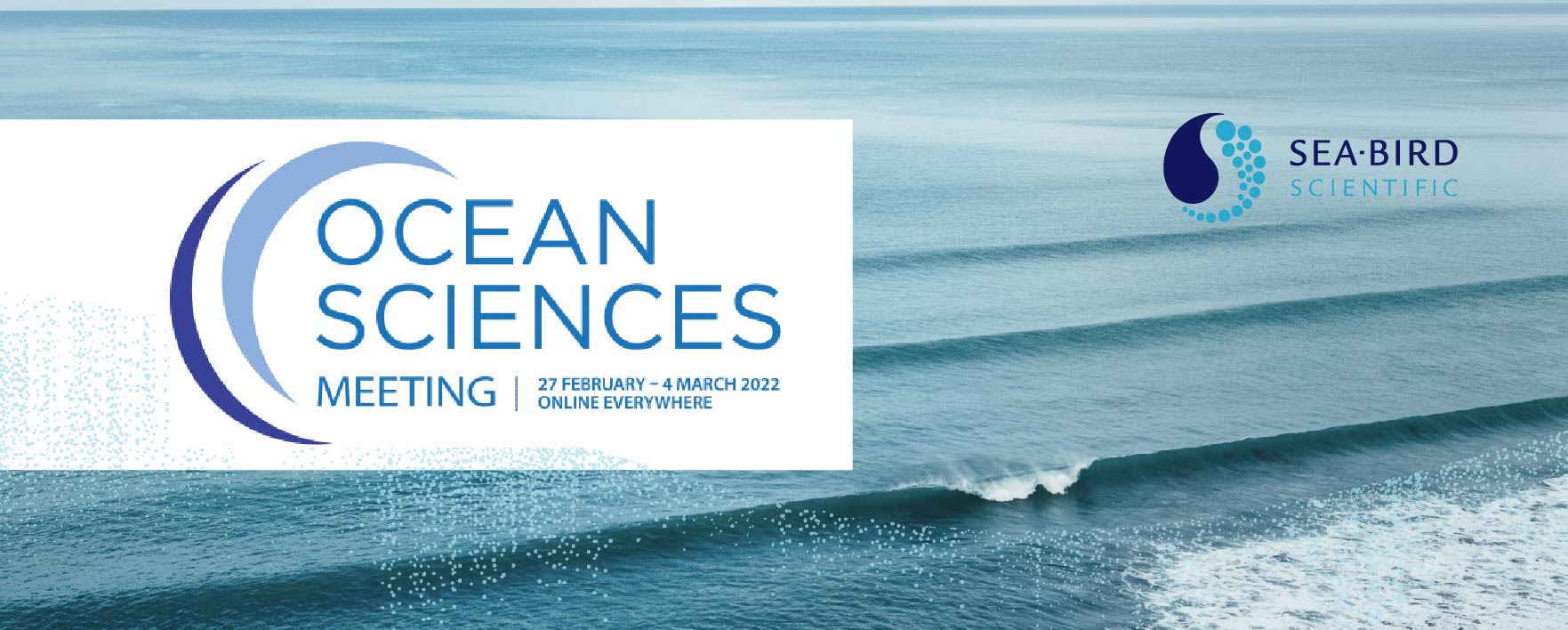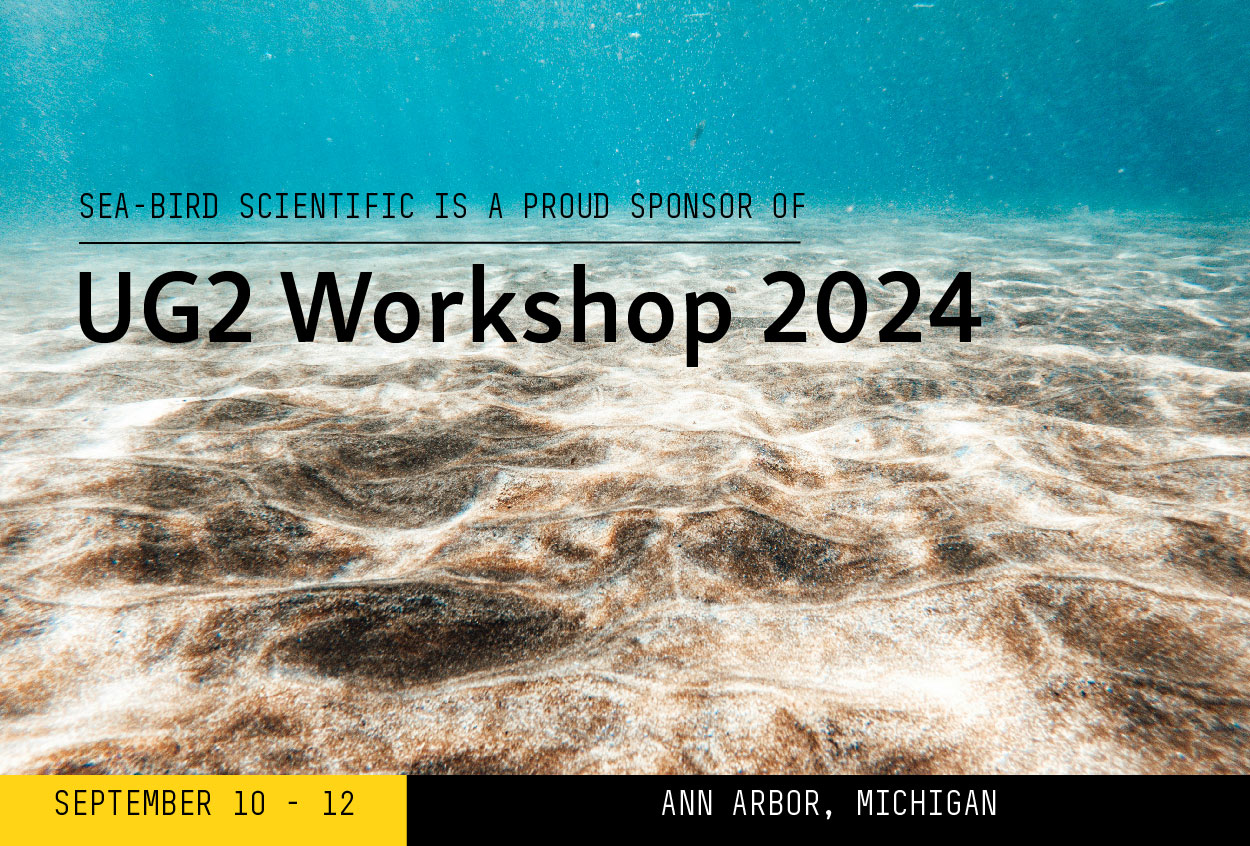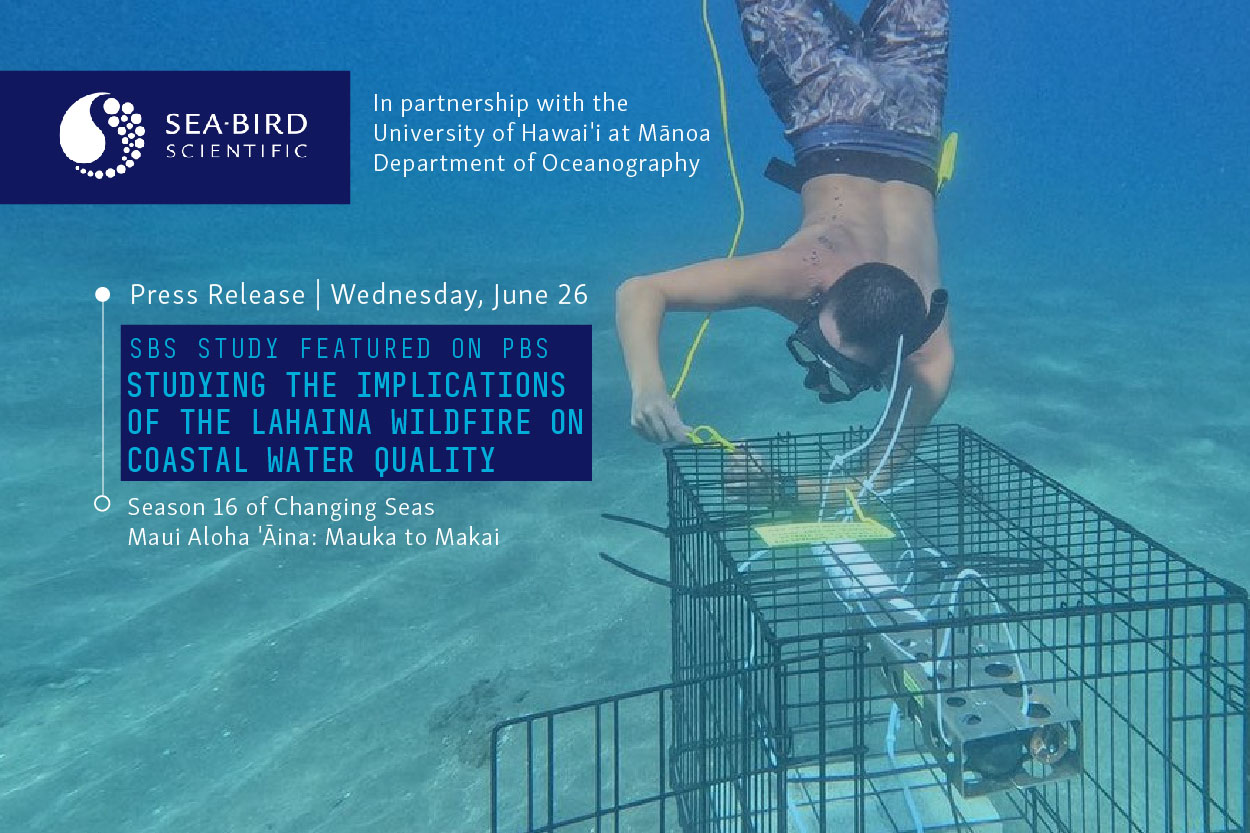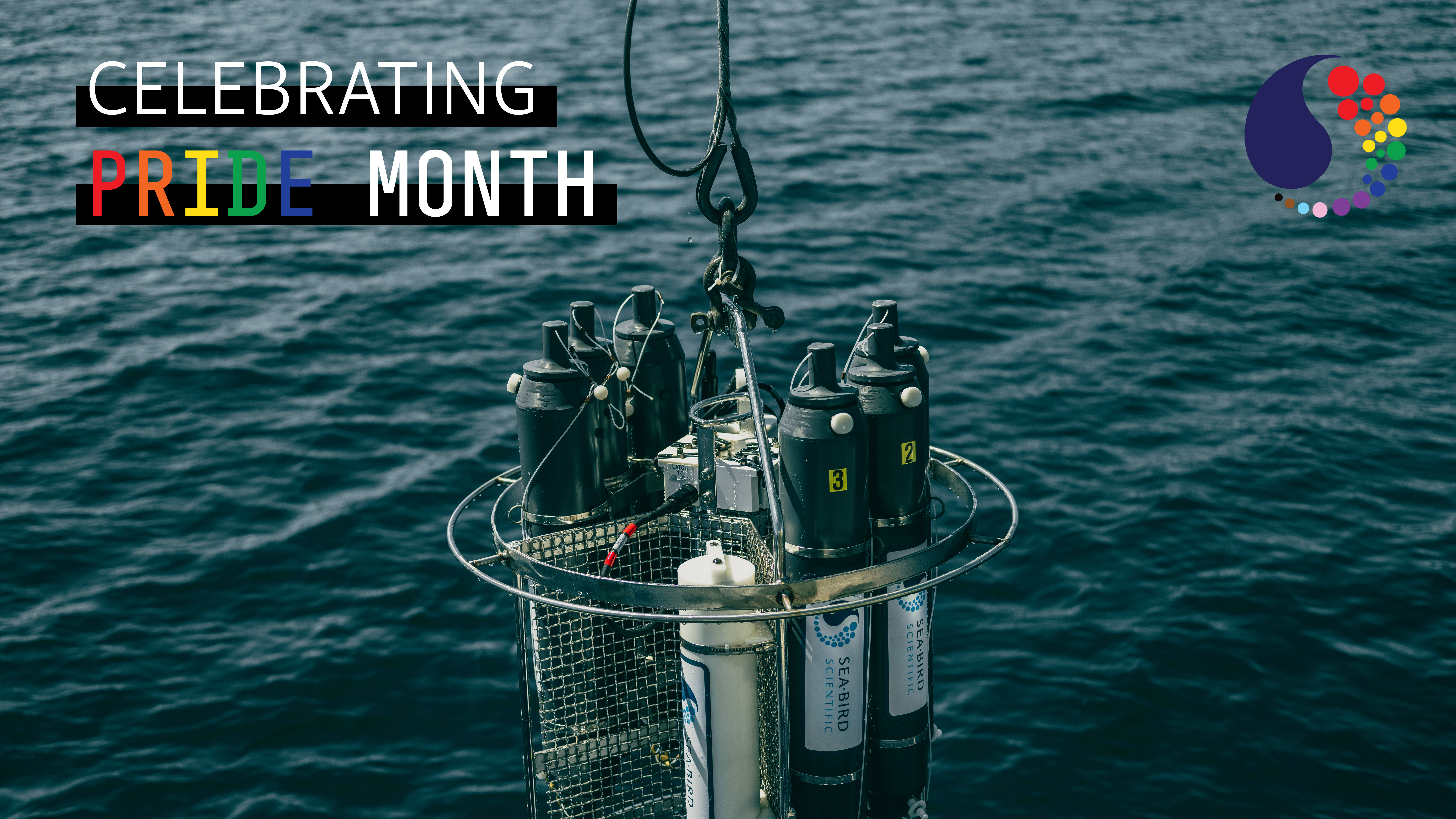Ocean Sciences 2022

We’re excited to announce Sea-Bird Scientific is virtually exhibiting at the Ocean Sciences Conference this year from February 27 to March 4. Although the show will be entirely virtual, we will be available throughout the conference to meet with customers through the digital platform.
Abstracts from Sea-Bird Scientific
- Abyssalpelagic Magic: Improvements in Accuracy of the Deep Argo CTD
- Authors: David Murphy, Kim Martini and Nathalie Zilberman
- 3/1/2022, 07:14 PM
- The Deep Argo program is an international effort to extend oceanographic measurements in the deep sea. Globally, it will consist of a fleet of over 1000 ocean robots that provide salinity, temperature and pressure measurements down to 6000 m. The requirements for the scientific payload are ambitious: low power for more than five years operation, manufacture more than 300 per year and meet the highest accuracy standards for physical measurements. Scientists at Sea-Bird Scientific have been working closely with the Argo program to accomplish these goals. Here we will discuss recent research and challenges in Deep CTD Technology to meet these targets.
- Three is a magic number: A comparison of three oxygen sensors deployed on one BGC-Float
- Authors: Kim Martini and Charles Branham
- 3/1/2022, 07:06 PM
- As part of the development of a new dissolved oxygen sensor for BGC-Argo program, the SBS 83, Sea-Bird Scientific R&D team deployed a Navis float with three dissolved oxygen sensors off Hawaii in late 2020. Integrated into the outflow of the CTD, the SBE 83 is both pumped and can be calibrated using established In Air methods. We will discuss the performance of all three sensors, including drift and response time, and the effects that stable, pumped flow has on the accuracy and precision of dissolved oxygen sensors.
- SBS 83: An Oxygen Sensor for Air Calibration on BGC-Argo Profiling Floats
- Authors: Charles Branham and Kim Martini
- 3/3/2022, 07:06 PM
- Optical oxygen sensors have been used for many years on BGC-Argo profiling floats with great success, however calibration drift in the sensor has been observed prior and after deployment in the ocean. To address this drift, oxygen sensors on floats are periodically adjusted using the oxygen measurement of the sensor right after it surfaces into air. In preparation of the new GO-BGC Argo program, Sea-Bird Scientific partnered with GO-BGC stakeholders (UW, MBARI, Scripps, & WHOI) to redesign our core optical oxygen sensor, the SBE 63, into an in-air calibratable sensor required by the program. The SBE 63 was originally designed to be mounted in the flow loop of the float’s CTD, thereby ensuring the sensor was measuring the same parcel of seawater as the CTD. This design forces the SBE 63 to always be submerged in seawater and makes it incapable of making in air measurements to correct calibration drift. To address this issue, the SBES 63 has undergone a mechanical and electrical redesign to mount it on a mast near the top of the float guard to allow in air measurements, while still taking advantage of the sample control provided by pumped flow. This presentation will present the effort needed to validate the performance and success of the new offering from Sea-Bird Scientific, the SBS 83.
- Pressure Compensated ISFET pH Sensor Development
- Authors: Daryl Carlson, Charles Branham, Yui Takeshita, David Walter, and Jesse Bauman
- 3/3/2022, 07:08 PM
- High pressure rated “deep” ISFET based pH sensors have been commercialized for several years. The deep pH technology was originally developed at MBARI and subsequently licensed to Sea-Bird Scientific for commercialization. The core of the sensor is a Silicon ISFET pH sensor die that is manufactured by Honeywell. The team at MBARI developed a way to package the delicate ISFET die to withstand immersion in seawater at pressures of up to 3000dbar for support of the SOCCOM program. Sea-Bird Scientific has developed a novel approach for packaging the ISFET die that uses a fluid medium to pressure compensate the sensor assembly (Patent Pending) to address long-term reliability issues and complex/time consuming calibration routines needed to characterize the pH sensor. Pressure compensation of the sensor assembly has several potential benefits over the existing design. First, pressure compensation equalizes the loading on high pressure seals, minimizing failure modes related to seal failure which increases the long-term reliability of the sensor. Secondly, pressure compensation allows for a more stable and accurate pH sensor by limiting dynamic mechanical loading from pressure and temperature cycling on the body of the ISFET die. These dynamic loads on the ISFET die create measurement errors in the pH signal that must be eliminated with complex and time-consuming sensor characterization routines. Finally, pressure compensation also creates a pathway for the design of a “full ocean” depth rated pH sensor for future programs such as Deep BGC Argo. This presentation will describe efforts to design, characterize, and validate the pressure compensated pH sensor design in the field.
- Meeting the PACE Satellite Vicarious Calibration Requirements using a network of autonomous HyperNAV systems
- Authors: Andrew Barnard, Emmanuel Boss, Robert Frouin, Matthew Mazloff, Nils Haentjens, Paul Chamberlian, Cristina Orrico, Justin Klumpp, and David Walter
- 3/1/2022, 10:05 AM
- Maintaining sufficient accuracy over the lifetime of satellite-based ocean-viewing radiometry missions requires a robust satellite vicarious calibration (SVC) program that enables routine verification of the in orbit ocean color instrument calibration. Accurate in situ measurements of surface upwelling radiance are used to drive normalized water-leaving radiance, which provides the principal source truth for SVC. NASA’s PACE mission includes the future launch of the Ocean Color Imager (OCI), which will provide unprecedented spectral resolution (~ 5nm) and coverage (350 – >900 nm) in satellite ocean color imagery. As such, there is a need to augment vicarious calibration capabilities especially with regard to the increased spectral resolution and coverage. To meet the future SVC needs, we have develop a novel system, HyperNAV, that uses autonomous profiling floats equipped with highly accurate, hyperspectral resolution radiometric sensors to provide in situ measurements for SVC with bounded and low uncertainty. Our novel approach is to select optimal regions that meet the SVC criteria and where float drift patterns are well understood, modelled and predicted. Our goal is establish and operate a network of HyperNAV systems to provide high quality in situ radiometric measurements to maximize the number of SVC quality observations. We present results from a deployment of multiple HyperNAV systems conducted off of Hawaii in June of 2021, demonstrating the end-to-end capabilities of a network of HyperNAV. We briefly describe the HyperNAV system and approach, including the hyperspectral radiometric sensor system, mission control and prediction, and data delivery. We also present methods used to evaluate the absolute radiance uncertainties based on the HyperNAV measurements collected during the June 2021 deployments. We show that the HyperNAV system can meet the low radiance uncertainty requirements for PACE.
- Uncertainty in Calibration of Sea-Bird CTDs
- Author: Laura Collins
- 3/2/2022, 09:08 PM
- Sea-Bird Scientific manufactures and calibrates instrumentation for a variety of oceanographic applications, including many of the workhorse CTDs used in the field. Developing a thorough understanding of the calibration uncertainty of these sensors is beneficial both for more informed utilization of sensor data by the end user and for ensuring reliability in manufacturing calibration processes. Analysis of sensor uncertainty from primary temperature and salinity standards through final laboratory calibration in Sea-Bird’s precision calibration baths is presented.
More details to be announced.

Related Posts
Featured Posts
UG2 Workshop 2024
We hope to see you at UG2 '24 We are excited to sponsor the upcoming 2024 Glider Workshop in Ann Arbor, Michigan, from September 10 - 12, 2024. Overview This workshop will bring together the global underwater glider community to strengthen international collaboration...
Oceanology International 2024
We hope to see you at #Oi24 We are excited to return to Oceanology International 2024 again in London, UK from March 12-14. Overview Oceanology International brings together 500+ exhibitors in the only event that links the three key players in the industry:...
Ocean Sciences Meeting 2024
We hope to see you at #OSM24 We are excited to return to Ocean Sciences Meeting 2024 in New Orleans, Louisiana from February 18-23 at booth number #527. Overview The Ocean Sciences Meeting 2024 is co-sponsored by the American Geophysical Union, the Association for the...
Science and Technology
Platform


